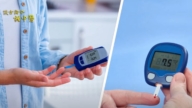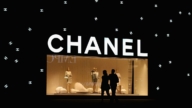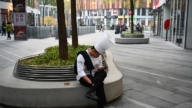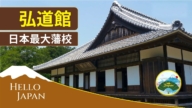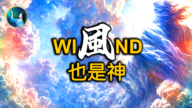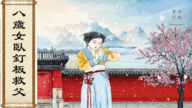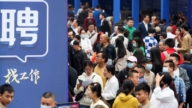【新唐人2013年05月03日訊】一場「農夫山泉質量門」風波,徹底打碎了大陸民眾對於中國食品安全最後一線希望。瓶裝飲用水都不如自來水了,老百姓還能喝甚麼?各種五花八門的瓶裝水哪種才是最乾淨的?為何各種瓶裝水企業執行的標準不一?諸如此類的疑團成了目前人們最迫切想要了解的問題。而這一切的背後,呈現出中國瓶裝水行業質量隱憂和標準亂象。
在公眾的認知當中,瓶裝水理應比自來水更加安全、衛生。然而,通過對比兩者國家標準的水質指標得出:瓶裝水質指標僅有20項,自來水質指標則達到了106項。而諸如汞、銀、四氯化碳、甲醛在內的毒理性指標,以及pH值、硬度等較為常見的水質指標,都沒有出現在瓶裝水國標中。
甚至有專家研究發現,在對微生物的要求方面,瓶裝水國標還要低於自來水國標。例如:瓶裝水國標中,大腸菌群指標為每100毫升小於或等於3個MPN 值(MPN/100ml≦3),而自來水國標中則要求不得檢出大腸菌。
北京水污染環保自願者、民間水專家張峻峰:「 好像瓶裝水的標準確實是比較老,或者一直沒有一個適合的標準出臺。自來水的指標應該在去年下半年的時候,國家頒布了一個更加嚴格的、參照歐美發達國家這樣一種指標體系。」
那是不是自來水就肯定比瓶裝飲用水要乾淨呢﹖一位大陸自來水安全檢測專家向《新唐人》道出了不為人知的實情。
廣西欽州市自來水公司安全部副主任戚欽宏:「在歐洲和美國就是那種直飲水,但是人家的標準是100多樣標準,我們中國做不到。沒有這個條件做得到。 像我們這個地方大概就40多項吧,40多項都不一定完全做完整。可能在北京、深圳這些地方做的標準多一點吧!」
同時,專家還指出,一些外在因素也會導致自來水水質安全出現問題。例如地下水管壁的銹化和水源污染。
此外,有些地方的自來水源因為過髒,不得不用大量藥物去淨化過濾,當地自來水廠可以和化工廠相媲美。而這種含有大量化學藥物的自來水,如果直接飲用,也會對身體造成傷害。
戚欽宏:「 我們中國為甚麼每年有8500多個癌症病人,每6分鐘有一個,一個肺癌、一個肝癌,其中肝癌就和喝水有關。」
戚欽宏認為,造成這些現象的根源,其實是中國的發展模式。
戚欽宏:「 我們中國基本上發展到那裏就污染到哪裏,就是先發展、污染,然後再治理,但是(治理)污染的成本太大了!這和中國政府發展片面追求GDP有關,這是根源。」
隨著飲用水市場競爭日趨激烈,各種 「礦泉水」、「山泉水」、「純淨水」等相繼誕生,企業執行的標準「國標」、「地標」、「企標」搞得消費者一頭霧水。
張峻峰:「一個是真正的天然礦泉水,或者是天然的地表水。還有一種是人工加工的水,一種加工的水叫純淨水或者蒸餾水, 還有一類被稱之為礦物質水,不是礦泉水也不是純淨水,實際上就是自來水通過過濾加工之後,再加上一定的礦物質,組合而成的。」
但無論是哪種類型飲用水,執行何種標準,質量都越來越令人堪憂。
據市場調查數據顯示,瓶裝水在致癌物質溴酸鹽含量上,礦泉水的合格率僅50%,礦物質水合格率為66.7%,山泉水為71.4%。
除了「農夫山泉」之外,「雀巢礦泉水」、「娃哈哈純淨水」、「依雲礦泉水」等知名水品牌,都曾爆出質量醜聞。
究竟是甚麼原因造成了中國飲用水市場如此亂象叢生?
戚欽宏:「主要原因就是工廠,競爭激烈。 另外一個原因就是,衛生監督部門檢查的還不夠嚴格,我們中國很多食品安全,很多的責任就是那些職能部門檢查的不嚴格。」
專家最後建議大陸民眾,自來水盡量過濾,盡量飲用白開水或者水源地無污染的礦泉水。
採訪/朱智善 編輯/張天宇 後製/肖顏
China’s Bottled Water Worse than Tap Water
‘The Quality of Nongfu Spring’’ incident has completely
shattered Chinese people’s hope for safe food.
People ask themselves, if even the bottled water
is worse than the tap water, what can we drink?
Which kind of bottled water is the cleanest?
Why bottled water’ companies have different standards?
Such questions bother people’s minds,
and they eagerly want to know the answers now.
However, behind all of these transpire people’s worries,
and the standards’ chaos of China’s bottled water industry.
Based on public awareness, bottled water should be
more secure and clean than tap water.
However, a comparison of national standards
for tap’ and bottled water show something else.
There are 106 quality indicators for tap water,
but only 20 quality indicators for bottled water.
Silver, carbon tetrachloride, formaldehyde, including
toxicological levels, as well as pH, hardness,
and other common water quality indicators,
are not required to measure in the bottle water GB (Guóbiāo.)
Experts even found, the allowable level of microorganisms
in tap water is lower of that in GB bottled water.
For example, in bottled water GB, coliform index should be
less than 3 MPN per 100ml (MPN/100ml, ≦ 3), but the tap water does not allow presence of coliform.
Beijing water pollution and environmental protection
volunteer, private water expert, Zhang Junfeng spoke on the issue.
Zhang Junfeng: ‘The bottled water standards are indeed old,
or there is not a suitable standard yet.
Last year, the state published stricter tap water standards,
with reference to the developed countries.’
So, is the tap water definitely cleaner than the bottle water?
Mainland tap water testing expert shared little-known facts.
Qi Qinhong is a Deputy Director of Guangxi Qinzhou
Tap Water Company spoke with NTD.
Qi Qinhong: ‘Europe and the US have over 100 standards
for any kind of drinking water; we in China cannot do this.
There are no conditions to do this. Like in our place,
there are around 40 standards, and even these cannot be met.
Maybe in places such as Beijing and Shenzhen,
they have more standards’ requirements.’
Meanwhile, experts pointed out that some external factors
can lead to water quality and safety problems, such as the groundwater pipes walls’ rust and water pollution.
In addition, in some places, the source of tap water is so dirty,
the water has to be filtered and purified by many chemicals, so the local tap water factory is more like a chemical factory.
This kind of tap water contains a lot of chemicals,
and if drank directly can be harmful to the human body.
Qi Qinhong: ‘China has over 8500 new cancer patients each
year; every 6 min. there is one lung’ or liver cancer patient; the liver cancer is related to the water people drink.’
Qi Qinhong believes, the root cause of these phenomena,
is in fact China’s developmental model.
Qi Qinhong:’In China wherever we have development,
we have pollution.
Or first we develop and pollute, and then think about control.
But the costs to control the pollution are huge!
This relates to the Chinese government’s one-sided
pursuit of GDP, which is the root cause of the problem.’
With the increasing competition of the drinking water market,
all kinds of ‘mineral,’ ‘spring,’ and ‘pure’ water’ are born.
The companies’ implementation of standards like ‘GB,’
‘local,’‘enterprise,’ make the consumers fog headed.
Zhang Junfeng: ‘One kind is the real natural mineral water,
or the natural surface water.
Another is manually processed water,
called pure water or distilled water.
Another is the mineral water,
which is neither mineral, nor spring, nor pure water;
it is actually a tap water after processed by filtration,
with certain minerals added to it.’
But regardless of the kind of drinking water or standards,
the quality is always doubtful.
According to market survey data, bottled water carcinogen
bromate’s pass rate is 50% in mineral spring water, 66.7% in mineral water, and 71.4% in mountain spring water.
Except for ‘Nongfu Spring,’ ‘Nestle mineral water,’
『Wahaha purified water,’ ‘Evian mineral spring water,’
all well-known water brands,
have had quality scandals.
What had exactly caused such a chaos
on China’s drinking water market?
Qi Qinhong: ‘The main reason is the severe competition
between the factories.
Another is the health supervision departments’
investigation is not stringent enough.
In China, we have many food safety issues, so a lot of the
responsibilities should be taken away from those departments, because their investigation is not strict.’
Experts recommend to people in Mainland China,
to filter their tap water,
and to try drink boiled or mineral water,
which is water source pollution-free.





